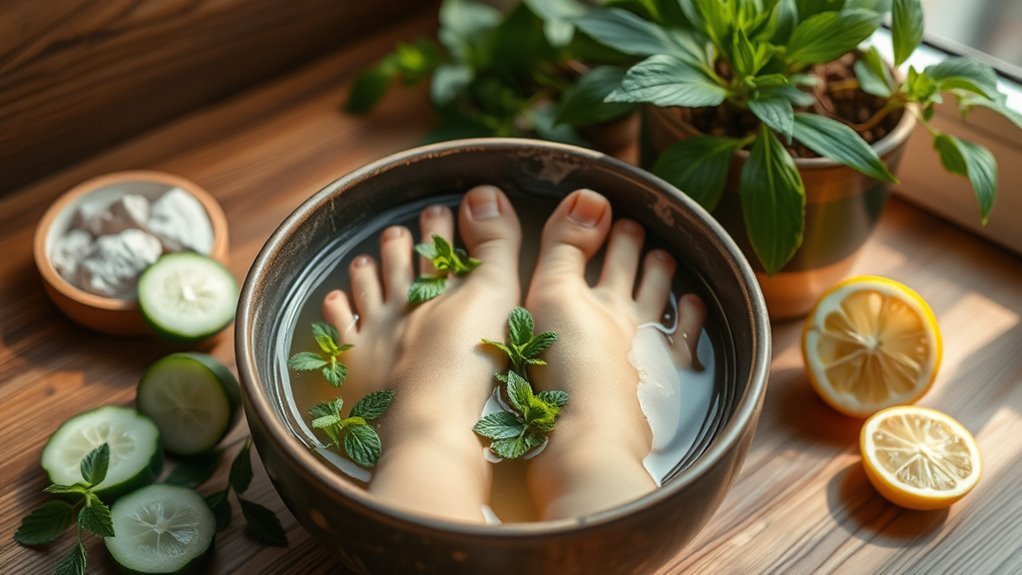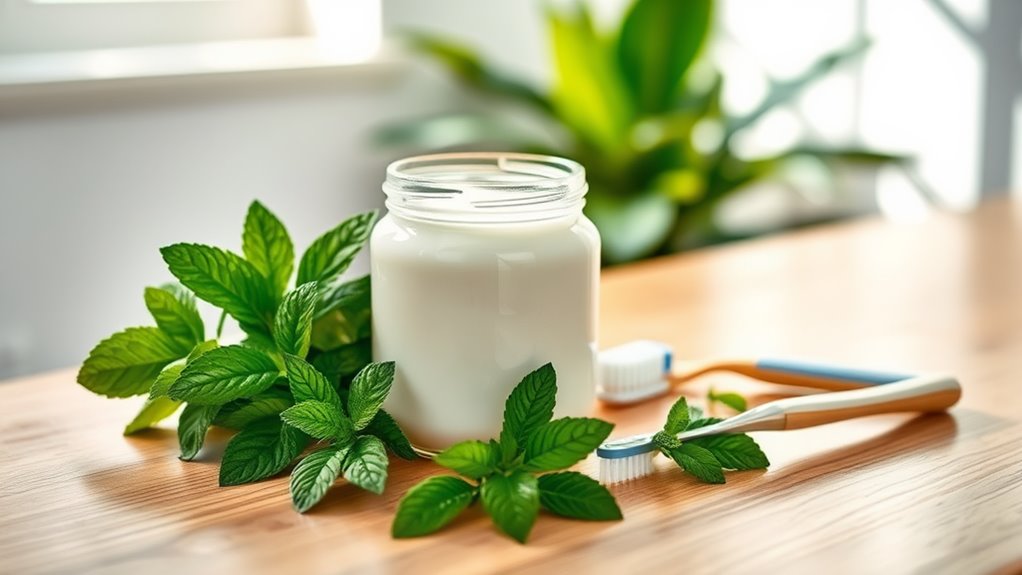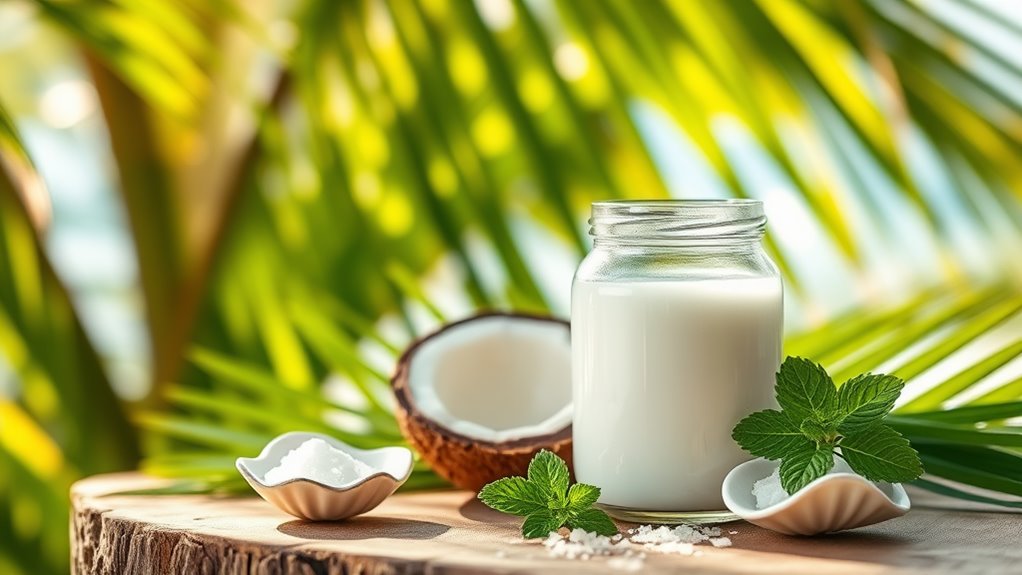How I Got Rid of Swollen Feet Using Only Natural Ingredients
Did you know that nearly 15% of adults experience swollen feet at some point in their lives? It can be uncomfortable and frustrating, affecting your daily activities. Fortunately, there are natural remedies that can offer relief without the need for medications. By exploring simple yet effective solutions, you might find the key to easing your discomfort. Let’s uncover the strategies that helped me tackle this issue head-on.
Key Takeaways
- I soaked my feet in warm water with Epsom salt for 15-30 minutes to reduce swelling and promote relaxation.
- I incorporated ginger into my diet to leverage its anti-inflammatory properties, which improved circulation and reduced discomfort.
- I diluted peppermint oil with a carrier oil and applied it to my feet for a cooling effect that alleviated swelling.
- I mixed apple cider vinegar with water for consumption, enhancing gut health and reducing inflammation in my body.
- I maintained hydration by drinking plenty of water and consuming potassium-rich foods like bananas to combat fluid retention.
Understanding Swollen Feet: Causes and Symptoms
Swollen feet can be more than just an uncomfortable nuisance; they often signal underlying health issues that deserve your attention. You might notice your feet feeling tight, heavy, or even discolored, which can stem from various causes like fluid retention, standing for long periods, or certain medical conditions. Fluid retention can be exacerbated by high salt intake or prolonged sitting, making it essential to monitor your lifestyle choices.
It’s vital to recognize these symptoms, as they can indicate issues like heart disease or kidney problems. Fortunately, there are several swollen feet remedies you can try at home, such as elevating your feet, wearing compression socks, or incorporating gentle stretches into your routine. Engaging in gentle exercises can also improve circulation and help reduce swelling effectively.
Listening to your body is important, so if the swelling persists or worsens, don’t hesitate to consult a healthcare professional for further evaluation and guidance.
The Power of Hydration
Staying properly hydrated is essential, especially when dealing with swollen feet. Dehydration can lead to water retention, making your feet even more swollen. Drinking enough water helps flush out toxins and reduces inflammation. Aim for at least eight glasses a day, and consider incorporating hydrating foods into your diet. Remember, adequate hydration also aids in efficient food breakdown and supports your digestive health. Additionally, maintaining a balanced, low-sodium diet can significantly help in reducing fluid retention and preventing swelling.
Here’s a quick guide to hydration:
| Drink Type | Hydration Level | Notes |
|---|---|---|
| Water | High | Best choice for hydration |
| Herbal Tea | Moderate | Caffeine-free options |
| Coconut Water | High | Natural electrolytes |
| Fruit Juices | Moderate | Watch for added sugars |
Keep this in mind: staying hydrated not only helps your feet but boosts your overall well-being. You’ve got this!
Elevation Techniques for Relief
When your feet are swollen, elevating them can make a significant difference in your comfort.
Try propping your feet up on pillows or a footrest to promote better circulation and reduce swelling.
You’ll find that positioning yourself correctly can lead to quicker relief and help you feel more at ease. Additionally, maintaining proper blood flow can significantly aid in reducing swelling and discomfort.
Proper Foot Elevation
Elevating your feet is one of the most effective ways to reduce swelling and promote circulation.
Start by lying down on a flat surface, preferably on your back. Use pillows or cushions to raise your feet above heart level; this helps fluid drain away from your lower extremities. Aim for at least 20 minutes a few times a day.
If you’re sitting, prop your feet up on a stool or another chair to maintain elevation. Remember, comfort is key; adjust the height until it feels right for you.
Consistent elevation can greatly relieve discomfort and improve your overall foot health. So, take a moment, kick back, and give your feet the rest they deserve!
Resting Position Tips
Finding the right resting position can make a significant difference in managing swollen feet. Elevating your feet above heart level helps reduce swelling, so consider these tips:
| Position | Description |
|---|---|
| Lying Down | Lie on your back with a couple of pillows under your legs. |
| Reclining | Use a recliner to keep your feet elevated comfortably. |
| Sitting | Sit in a chair with your feet on a footrest, ensuring they’re elevated. |
| Wall Sit | Lie on your back and raise your legs against a wall, forming an L-shape. |
| Cushion Support | Place cushions or rolled towels under your ankles while sitting or lying down. |
Try different positions to see what feels best for you. Remember, consistency is key to finding relief!
Natural Remedies: Epsom Salt Soaks
If you’re looking for a soothing way to reduce swelling in your feet, Epsom salt soaks can be a fantastic natural remedy.
Simply dissolve about half a cup of Epsom salt in a warm basin of water. Soak your feet for 15 to 30 minutes, allowing the magnesium in the salt to work its magic. This process not only helps reduce swelling but also promotes relaxation. Staying hydrated can further enhance the effectiveness of this method by helping to flush out excess fluids.
You’ll find that the warmth of the water combined with the Epsom salt eases tension and discomfort. To enhance the experience, consider adding a few drops of essential oils like lavender. Additionally, soaking your feet can aid in improving circulation and alleviating swelling, making it an effective practice for overall foot health.
After soaking, gently pat your feet dry, and you’ll likely notice a significant improvement in how your feet feel. Treat yourself to this simple self-care routine!
The Benefits of Ginger
After enjoying a soothing Epsom salt soak, you might want to explore another potent natural remedy: ginger.
This versatile root is packed with anti-inflammatory properties that can help reduce swelling in your feet. When you incorporate ginger into your diet, whether through tea or as a spice in your meals, you’re not just adding flavor; you’re also promoting circulation and easing discomfort. Additionally, incorporating fiber-rich foods can further enhance your digestive health, which is crucial for reducing overall swelling.
Ginger’s antioxidants can combat oxidative stress, which contributes to swelling. Plus, its natural warming effect can enhance blood flow, helping you feel more comfortable. Additionally, herbal teas can provide further benefits for overall health, making ginger an excellent choice in your wellness routine.
How Peppermint Oil Helps
When you’re dealing with swollen feet, peppermint oil can be a game changer.
Its anti-inflammatory properties help reduce swelling, while the cooling sensation brings instant relief to tired, aching feet. Using peppermint oil might just make your discomfort a little more manageable. Additionally, incorporating light exercises can further improve blood flow and alleviate swelling.
Anti-inflammatory Properties
While many remedies exist for swollen feet, peppermint oil stands out due to its powerful anti-inflammatory properties.
When you apply peppermint oil, you’re harnessing compounds like menthol that help reduce swelling and discomfort. This oil works by targeting inflammation, which is often the culprit behind your swollen feet.
Using it can promote circulation, making you feel lighter and more at ease. Just remember to dilute the oil with a carrier oil before applying it to your skin, ensuring you avoid irritation.
Regular use can help you see improvements over time, allowing you to enjoy more mobility and comfort. You don’t have to struggle with swollen feet; peppermint oil might just be the natural solution you’ve been searching for.
Cooling Sensation Relief
If you’re looking for a quick and effective way to soothe swollen feet, peppermint oil offers a revitalizing cooling sensation that can provide instant relief. Its natural menthol content creates a rejuvenating effect, easing discomfort and promoting relaxation. You’ll feel the instant difference as it penetrates the skin, calming the inflammation.
Here’s a quick overview of peppermint oil’s benefits:
| Benefit | How It Helps | Usage Tips |
|---|---|---|
| Cooling Sensation | Alleviates discomfort | Apply diluted on feet |
| Improves Circulation | Boosts blood flow | Massage gently |
| Reduces Swelling | Helps decrease inflammation | Use regularly for best results |
Incorporating peppermint oil into your routine can make a significant difference in your comfort.
The Role of Apple Cider Vinegar
Apple cider vinegar has gained popularity as a natural remedy for various health issues, including swollen feet. Its anti-inflammatory properties can help reduce swelling and promote better circulation. Additionally, its metabolic health benefits can further aid in reducing inflammation throughout the body.
When you incorporate apple cider vinegar into your routine, you might find it beneficial in these ways:
- Balances pH levels in your body
- Reduces water retention
- Aids in detoxifying your system
- Supports circulation improvement
- Provides essential vitamins and minerals
To use it, simply mix two tablespoons of apple cider vinegar with a glass of water and drink it daily, or soak your feet in a solution of vinegar and warm water. Additionally, this remedy can enhance your gut health by supporting digestion and overall wellness.
You’ll likely notice a difference in how your feet feel, making your journey to relief more manageable.
Incorporating Turmeric Into Your Routine
Turmeric is a powerful spice known for its anti-inflammatory properties, making it a great addition to your routine if you’re dealing with swollen feet.
You can easily incorporate it into your meals with simple recipes like turmeric tea or a sprinkle in soups.
Let’s explore how this golden spice can help soothe your discomfort and promote overall wellness.
Anti-Inflammatory Properties
While dealing with swollen feet can be uncomfortable, incorporating turmeric into your routine may offer some relief thanks to its powerful anti-inflammatory properties. This vibrant spice not only adds flavor to your meals but also helps reduce swelling and pain.
Here are some ways turmeric can benefit you:
- Contains curcumin, a potent anti-inflammatory compound
- Supports overall joint health and mobility
- May improve blood circulation, reducing fluid retention
- Acts as a natural pain reliever for sore feet
- Boosts your immune system, promoting overall wellness
Adding turmeric to your diet can be simple and effective. Whether you enjoy it in a warm drink or sprinkled on your dishes, this golden spice might just be the relief you’ve been looking for.
Easy Recipe Ideas
Incorporating turmeric into your meals doesn’t have to be complicated or time-consuming. You can easily boost your diet with this powerful spice. Here are some simple recipe ideas that make it easy to enjoy turmeric’s benefits while also being delicious.
| Recipe | Description |
|---|---|
| Turmeric Golden Milk | Warm milk with turmeric, honey, and a pinch of black pepper. Perfect for relaxation! |
| Turmeric Rice | Cook rice with turmeric, garlic, and veggies for a vibrant side dish. |
| Turmeric Smoothie | Blend banana, spinach, turmeric, and almond milk for a nutritious boost. |
| Turmeric Hummus | Mix chickpeas, tahini, turmeric, and lemon juice for a flavorful dip. |
Try these ideas, and you’ll find it’s easy to add turmeric to your daily routine!
Dietary Changes for Reducing Swelling
Here are some dietary adjustments to contemplate:
-
Stay Hydrated: Drink plenty of water to flush out excess sodium. Additionally, staying hydrated helps maintain skin moisture and promotes a healthier overall appearance.
-
Reduce Salt Intake: Limit processed foods, which often contain high levels of sodium.
-
Eat Potassium-Rich Foods: Incorporate bananas, sweet potatoes, and spinach to balance sodium levels.
-
Increase Omega-3 Fatty Acids: Include fish, walnuts, and flaxseeds to help reduce inflammation.
-
Add Fresh Fruits and Vegetables: These are high in antioxidants and can aid in reducing swelling. Additionally, maintaining a balanced gut environment with probiotics can further support overall health and reduce inflammation.
Lifestyle Adjustments for Long-Term Relief
To achieve long-term relief from swollen feet, you might want to contemplate several lifestyle adjustments that can considerably improve your overall well-being.
Start by incorporating regular exercise into your routine; even simple activities like walking or stretching can enhance circulation.
Make it a habit to elevate your feet whenever you can, especially after long periods of standing or sitting.
Staying hydrated is essential, so drink plenty of water to help flush out excess sodium.
Additionally, consider wearing comfortable shoes with proper arch support to reduce strain.
Finally, manage stress through relaxation techniques like yoga or meditation, as stress can exacerbate swelling.




